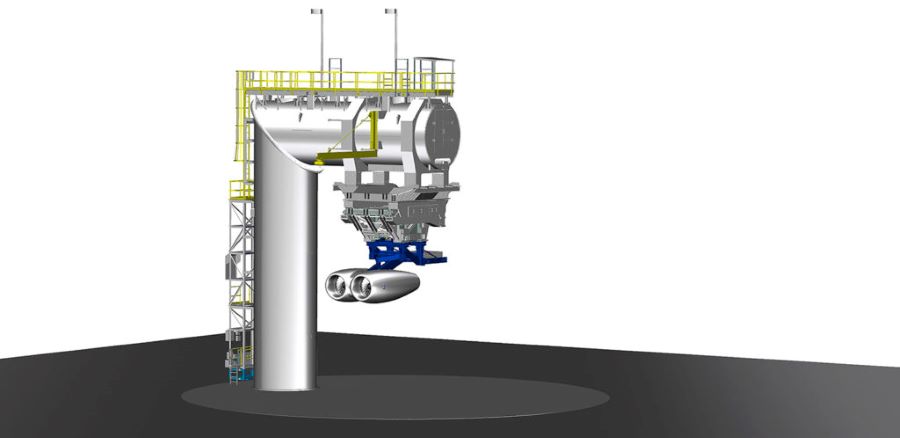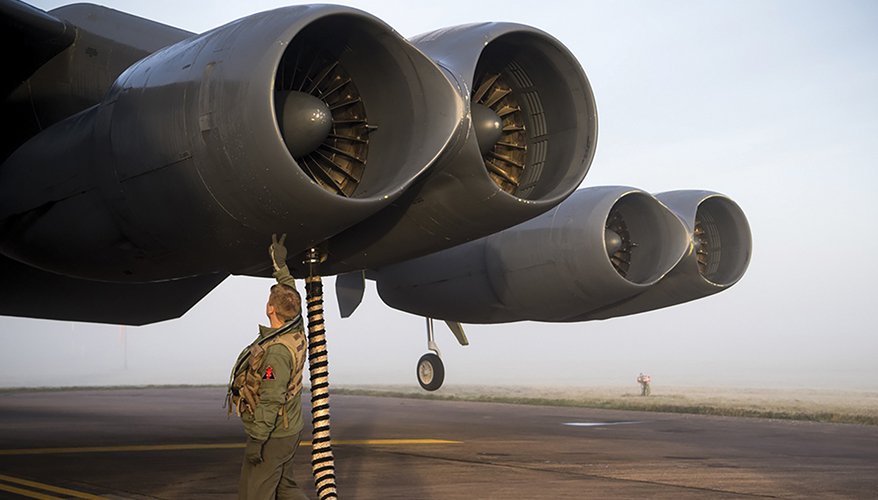The ageing B-52 Stratofortress bomber will receive new engines that will significantly enhance fuel efficiency and range, enabling the aircraft to continue operating until 2050.
Last year a USD2.6 billion contract was awarded to Rolls Royce as part of the CERP (Commercial Engine Replacement Program) effort. Under the CERP contract, Rolls Royce will replace 608 engines on the U.S. Air Force’s fleet of B-52H models.
The strategic bomber will be outfitted with a modern variant of the Rolls-Royce F130 engine, swapping the existing and ageing Pratt & Whitney TF33 engines. The engine upgrade will not impact the aircraft’s thrust or speed. The present B-52 engines are a huge cost factor in keeping the aircraft status ready.
“There is no future of the B-52 without the engine replacement program,” according to B-52 division Col. Louis Ruscetta. “The TF33 is essentially unsupportable now and so we are doing what we can to keep that on life support until the engine replacement program comes along.”

The USAF believes this will be a game changer for the B-52, as the Air Force goes to a two-bomber force structure, which will include the B-52 and the new upcoming B-21 Raider.
First flying in April 1952, the B-52 Stratofortress is now officially 70 years old. However the changes are not only engine related, but will also include the Raytheon AN/APG-79 radar used by the F/A-18E/F Super Hornet. The new radar will improve situational awareness, giving the B-52 a better ability to identify and prosecute targets.
“All the things are in place that are really defining what the B-52 looks like … into the 2030s,” said Brig. Gen. John P. Newberry, program executive officer for Air Force bombers. He said upgrades include “new engines, a new radar, Advanced Extremely High Frequency and Very Low Frequency communications improvements, data link updates and cryptologic improvements, as well as several smaller efforts.”
The engine upgrades to each B-52, will include several supporting modifications, such as new nacelles, pylons, generators and cockpit display systems. In addition to the new engine, work includes new physical wiring, hydraulic changes, power changes and cooling changes.

Currently, the Air Force anticipates outfitting the first B-52s with new engines in the 2026-2027 timeframe, with initial operational capability occurring in 2030. The service is still working out exactly how the Oklahoma City Air Logistics Complex at Tinker Air Force Base will juggle both the radar and engine replacement modifications, as the new radar will be ready to be installed before the new engines.
To help make the process quicker, in January 2022, Boeing trucked a retired B-52 carcass from Arizona’s Davis-Monthan Air Force Base “Boneyard” to the Oklahoma City Air Logistics Center, to be used as a mock-up for risk-reduction efforts and to solve some of the hydraulic component challenges of fitting the new engines. The mock-up is also being used to test the bomber’s new systems.

The nacelle is one of the crucial elements. The “twin-pod arrangement is fairly unique,” Rolls-Royce B-52 Program Director Scott Ames said. Boeing and Rolls share a digital model of the B-52’s wing so that both are working from the same baseline.
As is true today, the eight engines will fit in four nacelles. While USAF once considered four large-fan commercial engines instead, it stuck with eight to avoid substantial redesign of the wing, cockpit, and other components, and to minimize risk and delay.
Boeing will modify the first two B-52Hs with the F130 engines in 2024, doing the work at its San Antonio modification facility. The first eight planes will join a B-52 test force at Edwards Air Force Base, Calif.
At the rate of 10 to 11 a year, production will run to about 2035 to complete all 76 aircraft. The first re-engined B-52s will be operational in about five years.








